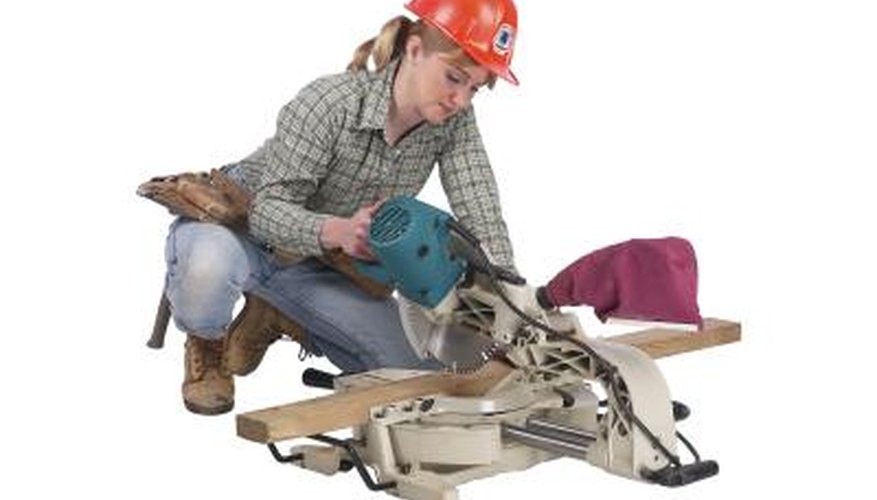Dado railing is a type of chair rail, which in turn is essentially a type of moulding that is installed about midway up the wall rather than at the base or ceiling. In addition to their aesthetic value, these rails also serve a practical purpose by protecting your wall from getting bumped or damaged by chair backs, should you accidentally push a chair backward into the wall. The only real reason to make an angled cut in the dado rail is to join two pieces together as they wrap around a corner in the wall.
- Dado railing is a type of chair rail, which in turn is essentially a type of moulding that is installed about midway up the wall rather than at the base or ceiling.
- The only real reason to make an angled cut in the dado rail is to join two pieces together as they wrap around a corner in the wall.
Place the dado railing flat on the mitre saw and secure it against the guide rail.
Swivel the blade of the mitre saw horizontally if you need an angle running top to bottom, or vertically if you need a front-to-back cut.
Line up the blade with the portion of the dado rail you need to cut. There will be a set of numbers both on the face of the saw and at the base of the saw that will tell you exactly at which angle you will be cutting the rail.
Remove any obstacles, such as long hair or loose clothing, from the cutting area, then turn on the blade and lower it smoothly onto the wood. The mitre saw will make a clean cut at the angle you've specified.
